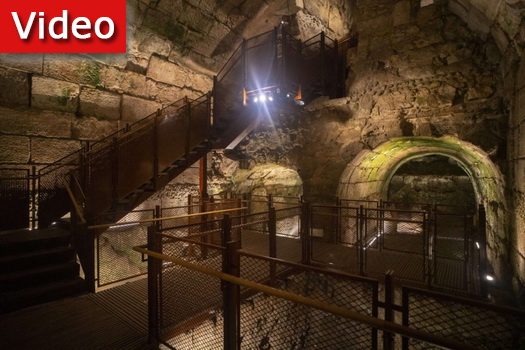
Recently Developed Visitors’ Route Reveals One Of The Most Magnificent Public Buildings Discovered From Second Temple-Period Jerusalem
For the first time in the Western Wall Tunnels, following excavations by the Israel Antiquities Authority and the Western Wall Heritage Foundation, the Western Wall Heritage Foundation and the Israel Antiquities Authority are enabling the public to view impressive new sections of one of the most magnificent public buildings uncovered from the Second Temple period.
The discovery – the fruit of archaeological excavations recently conducted in the Western Wall Tunnels – will be part of the new route opened to visitors ahead of Rosh Chodesh Elul and Slichot (Penitential prayers).
Part of the structure, to the west of Wilson’s Arch and the Temple Mount, was discovered and documented by Charles Warren in the nineteenth century, followed by various archaeologists in the twentieth century. Now that its excavation is complete, we know that it contained two identical magnificent chambers with an elaborate fountain between them. The walls of the halls and the fountain were decorated with a sculpted cornice bearing pilasters (flat supporting pillars) topped with Corinthian capitals. The decorative style of the building is typical of opulent Second Temple-period architecture.
Reclining dining rooms were common in the Greek, Hellenistic, and Roman worlds from the fifth century BCE to the third–fourth centuries CE. They are known in the archaeological record from private homes, palaces, temples, synagogue complexes and civilian compounds. Dining or feasting while reclining is mentioned as early as the Book of Amos – in the first half of the eighth century BCE – when the prophet rebukes the people of the Kingdoms of Judah and Israel.
In the late Second Temple period, before the Temple’s destruction, extensive changes made throughout the area included alterations to the building, which was divided into three separate chambers. In one of the chambers, a stepped pool was installed that was used as a ritual bath.”









